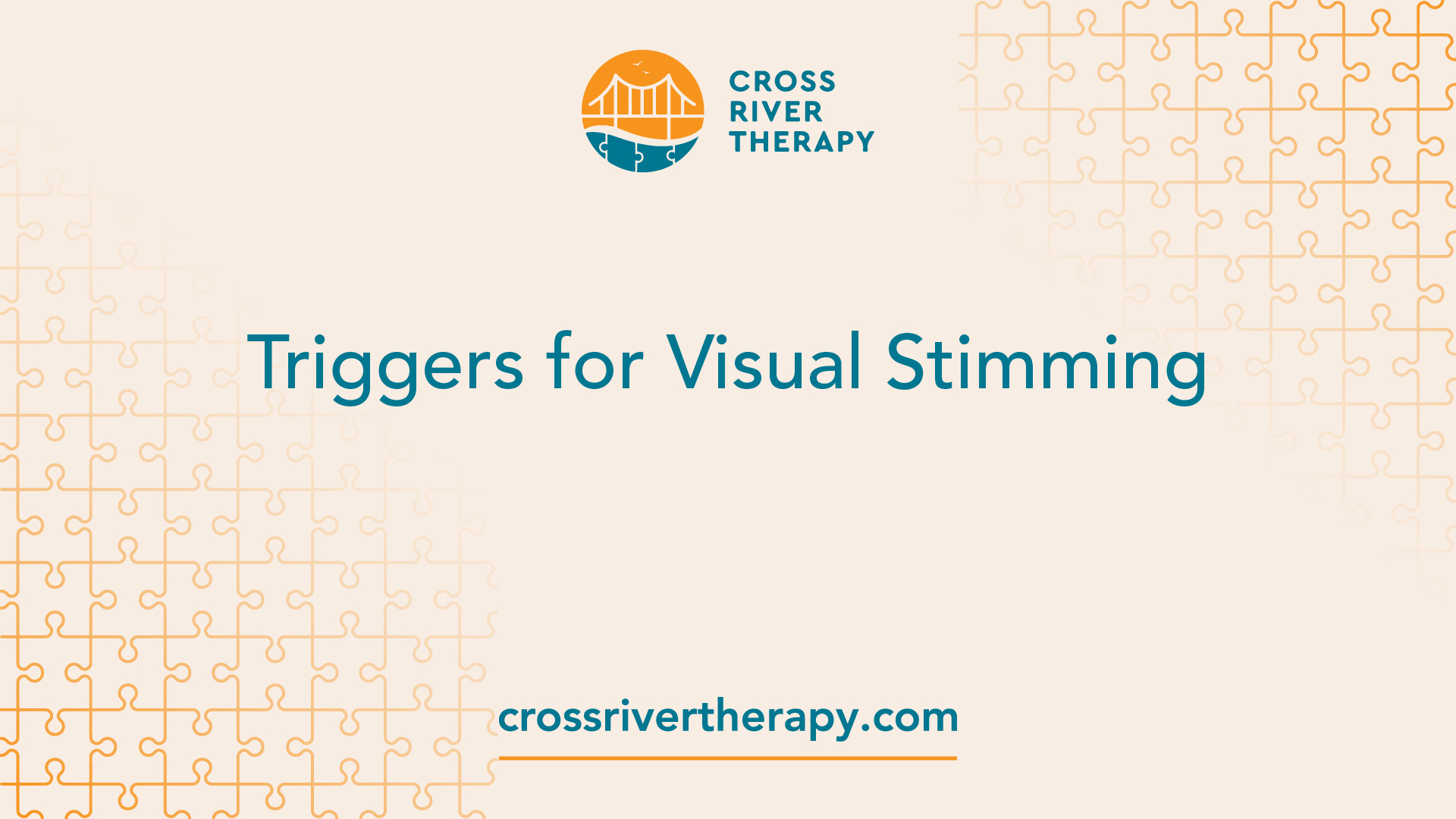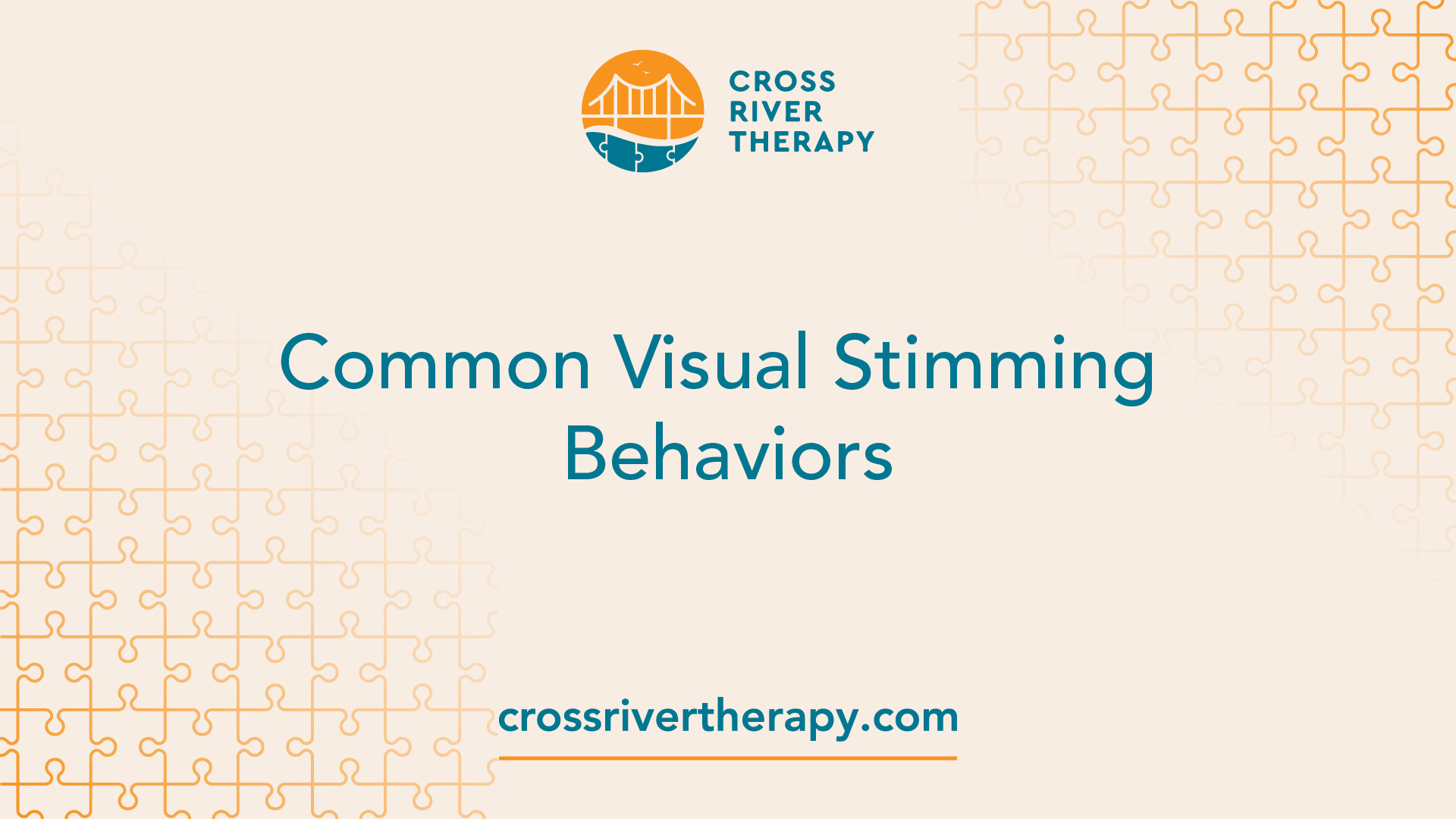Most Common Visual Stimming Examples
Explore visual stimming examples and discover their importance and management in the world of autism.
Understanding Visual Stimming
Diving into the world of autism, it's crucial to grasp the concept of "visual stimming," a common behavior observed in many individuals on the spectrum.
Definition and Explanation
Visual stimming, in the context of autism, involves repetitive movements or behaviors that engage the sense of sight. Examples include flicking fingers in front of the eyes, staring at lights, watching moving objects, or partaking in other visually stimulating activities. These actions are often self-soothing and provide comfort and sensory stimulation to those with autism. If you've ever asked "can stimming be visual?", the answer is indeed yes.

Purpose and Function
The purpose and function of visual stimming are multifaceted. These behaviors can be triggered by sensory processing difficulties, anxiety, stress, excitement, and sensory-seeking tendencies in individuals with autism. Visual stimming serves as a way for those with autism to regulate their sensory experiences, find calm in overwhelming situations, cope with anxiety, and seek out visually stimulating sensations.
Furthermore, visual stimming behaviors help individuals manage sensory sensitivity and sensory overload by redirecting attention and modulating sensory input. These behaviors can create a sense of comfort, control, and predictability in their environment, serving as a form of communication to express emotions, needs, and comfort levels.
Visual stimming can also serve as a form of nonverbal communication, with individuals using specific visual stimming behaviors to express their needs or discomfort [2]. This highlights the importance of understanding and interpreting these visual cues for appropriate support.
In conclusion, visual stimming plays a significant role in the lives of individuals with autism, helping them navigate their sensory experiences and express their emotions. Understanding these behaviors is crucial for supporting and communicating effectively with individuals on the autism spectrum.
Triggers for Visual Stimming
Visual stimming, a form of self-stimulatory behavior, can be triggered by various factors. Understanding these triggers is crucial to managing and supporting individuals who engage in visual stimming. The triggers primarily revolve around emotional influences and sensory overload.

Emotional Influences
Emotions play a significant role in triggering visual stimming behaviors. Various emotional states such as excitement, happiness, boredom, stress, fear, and anxiety can elicit visual stimming behaviors. These behaviors serve as a means of self-regulation and provide comfort to individuals engaging in them.
For instance, an individual may resort to visual stimming to cope with overwhelming emotions or as a form of self-expression. These behaviors can range from staring at objects, repetitive blinking, hand-flapping, to object placement, varying from person to person and serving different functions such as self-soothing, stress management, and expression.
Sensory Overload
Sensory overload is another primary trigger for visual stimming behaviors in individuals with autism. Those experiencing sensory processing difficulties, anxiety, stress, excitement, and sensory-seeking tendencies may resort to visual stimming as a coping mechanism.
These behaviors help regulate sensory experiences, find calmness in overwhelming situations, cope with anxiety, and seek out visually stimulating sensations. When sensory overload occurs, individuals might exhibit behaviors like shutting down or experiencing fragmentation.
Managing sensory overload can significantly help in controlling visual stimming behaviors. Strategies such as reducing fluorescent lighting, providing sunglasses, and creating workstations with high walls to block visual distractions are often effective.
Recognizing these triggers can provide valuable insights into understanding and managing visual stimming. It is important to remember that each person is unique, and their triggers and responses may also vary. For more information on visual stimming, refer to our article on can stimming be visual?.
Common Visual Stimming Behaviors
Visual stimming behaviors are repetitive actions that engage the visual sense. They are common in individuals with autism and can serve various purposes, such as self-regulation and sensory exploration. Below are some common examples of visual stimming behaviors, including hand movements, object engagement, and eye movements.

Hand Movements
Hand movements often form a significant part of visual stimming. One of the most recognizable behaviors in this category is hand flapping, which involves rapidly and repeatedly moving the hands up and down or back and forth. Another common behavior is rocking, where individuals rhythmically sway their bodies back and forth or side to side. Both hand flapping and rocking can serve as self-soothing mechanisms and provide a sense of comfort [4].
Object Engagement
Another typical form of visual stimming involves engagement with objects. This can include staring at objects, waving objects in front of the eyes, or making repetitive hand movements around an object. These behaviors are not only a means of self-regulation but also a form of sensory exploration for individuals on the autism spectrum or those with sensory processing disorders.
Eye Movements
Visual stimming can also involve specific eye movements. Examples of such behaviors include looking at lights for an extended period, frequently blinking or rolling the eyes, or focusing on specific visual patterns or objects. These repetitive visual behaviors serve as a way for individuals to engage with their environment and regulate their sensory experiences.
By understanding these common visual stimming behaviors, parents and caregivers can better support their loved ones with autism, providing them with a more understanding and empathetic environment. For more insights into stimming, you can visit our articles on can stimming be visual? and can you stim and not have autism?.
Importance of Visual Stimming
Visual stimming, a common behavior in individuals with autism, plays a significant role in their life. It serves crucial functions related to self-regulation and emotional expression, helping them navigate their sensory experiences and communicate their needs and emotions in a non-verbal manner.
Self-Regulation
Visual stimming enables individuals with autism to regulate their senses by focusing their attention, finding calm, and creating a soothing effect through repetitive visual activities like staring at lights or moving fingers in front of the eyes. It helps in managing sensory sensitivity and sensory overload by redirecting attention and modulating sensory input.
Visual stimming behaviors help individuals with autism regulate their senses, manage sensory overload, cope with overwhelming stimuli, and create comfort, control, and predictability in their environment. It serves as a coping mechanism to help them manage sensory overload, anxiety, or frustration, playing a crucial role in navigating their sensory experiences [5].
Emotional Expression
Beyond acting as a sensory self-regulation tool, visual stimming can also serve as a form of nonverbal communication. Individuals with autism may use specific visual stimming behaviors to express their needs or discomfort. Understanding and interpreting these visual cues is crucial for providing appropriate support [2].
Visual stimming behaviors can be triggered by various emotions such as excitement, happiness, boredom, stress, fear, and anxiety. These emotions can elicit a need for self-regulation and provide comfort to individuals who engage in visual stimming. For example, an individual may engage in visual stimming as a way to cope with overwhelming emotions or as a means of self-expression.
In conclusion, visual stimming is not just a random behavior, but a critical self-regulatory and communication tool for individuals with autism. Recognizing and understanding the importance of visual stimming behaviors can help caregivers and support persons offer the right assistance and create a more understanding and supportive environment. For more information on common visual stimming examples, you can visit our detailed guide on the topic.
Managing Visual Stimming
Visual stimming behaviors, which can include actions like staring at objects, waving objects, or making repetitive hand movements, serve as a means of self-regulation and sensory exploration for individuals on the autism spectrum or with sensory processing disorders. There are several strategies that can be employed to manage these behaviors and support individuals who engage in visual stimming.
Supportive Environments
Creating a supportive environment is crucial for managing visual stimming. Sensory overload can significantly impact visual stimming in autistic individuals, leading to behaviors like shutting down or experiencing fragmentation. Strategies such as reducing fluorescent lighting, providing sunglasses, and creating workstations with high walls to block visual distractions can help mitigate sensory overload and manage visual stimming.
Here are examples of environmental modifications that can be made to support individuals who engage in visual stimming:
- Reduce fluorescent lighting: Use natural light or lamps with soft lighting.
- Provide sunglasses: This can help reduce the intensity of bright lights.
- Create workstations with high walls: This can minimize visual distractions.
Sensory Integration Techniques
Sensory integration techniques can be an effective way to manage visual stimming. Such techniques, including the creation of a sensory-friendly environment and the incorporation of sensory activities like deep pressure touch or sensory play, can help individuals address their sensory needs and manage sensory overload effectively [2].
Additionally, improving emotional expression skills can also support individuals with autism in managing visual stimming. Strategies such as social stories, role-playing, and teaching emotional regulation techniques can assist individuals in recognizing and expressing their emotions effectively, fostering better communication and connection with others.
Here are some examples of sensory integration techniques:
- Deep pressure touch: This can include activities like weighted blankets or firm hugs.
- Sensory play: This can involve playing with textured objects or sensory bins.
- Social stories and role-playing: These can help teach appropriate emotional responses.
By understanding the different triggers and examples of visual stimming, caregivers and families can better support individuals with autism in managing these behaviors and navigating their sensory experiences. It's important to remember that each individual is unique, and what works for one person may not work for another. Thus, a personalized approach based on the individual's needs, preferences, and responses is crucial.
Challenges and Benefits
Understanding the challenges and benefits of visual stimming can help in creating a supportive environment for individuals who engage in these behaviors. It's important to keep in mind that while there may be misconceptions and societal challenges, visual stimming also serves essential functions for self-regulation and emotional expression.
Social Stigma
Despite the importance and benefits of visual stimming, there are misconceptions surrounding this behavior. Some may perceive it as unusual or disruptive, leading to potential social stigma [1]. Certain self-stimulatory behaviors, like head banging or hand flapping, may garner more attention due to societal expectations for behavior and may cause concern for the person's well-being [6].
Visual stimming behaviors can also interfere with daily activities or relationships, presenting additional challenges. As such, it's vital to educate others about the purpose and function of visual stimming to foster empathy and inclusivity, ensuring individuals with autism feel valued and respected. For more on this, visit our article on can stimming be visual?.
Emotional Regulation
Visual stimming is not just about challenges; it also serves a critical role in emotional regulation. These behaviors can be triggered by various emotions such as excitement, happiness, boredom, stress, fear, and anxiety. These emotions can elicit a need for self-regulation and provide comfort to individuals who engage in visual stimming.
Stimming behaviors, including visual stimming, can aid in self-soothing and regulation, helping individuals calm themselves, find comfort in familiar patterns or movements, and create a sense of predictability and control. This can help to self-regulate emotional hyperarousal.
In conclusion, while visual stimming can present certain challenges, it's important to recognize and respect its role in emotional regulation. Encouraging understanding and acceptance can help to reduce stigma and support individuals who engage in these behaviors. Learn more about the link between stimming and autism in our article can you stim and not have autism?.
References
[2]: https://www.goldstarrehab.com/parent-resources/examples-of-visual-stimming
[3]: https://www.yellowbusaba.com/post/what-is-visual-stimming
[6]: https://www.betterhelp.com/advice/behavior/25-examples-of-stimming-behaviors/



